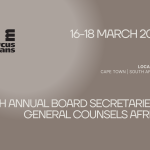Ask any senior manager in a regulated firm what keeps them awake at night, and the chances are it won’t just be profit margins; it’s personal accountability. Since its introduction in 2016 following the global financial crisis, the Senior Managers and Certification Regime (SM&CR) has reshaped the UK’s approach to leadership responsibility in financial services. Designed to eliminate the “blame game” culture and clarify who is accountable for what, the SM&CR has grown into a core mechanism for driving ethical conduct and sound governance.
But fast forward to 2025, this isn’t merely about compliance, it’s about leadership under pressure, integrity in complex systems, and trust in turbulent times. So where is the regime heading, and how well is it working? In this article, we explore five essential questions that probe the SM&CR’s foundations, purpose, real-world challenges, business impact and future adaptability.
Historical Context and Rationale
- What regulatory failures led to the creation of the SM&CR, and how does it fundamentally change the rules of accountability?
The SM&CR was born from the ashes of the 2008 financial crisis, a period marked by scandals such as LIBOR manipulation and widespread mis-selling of payment protection insurance (PPI). In the aftermath, it became painfully clear that the regulatory system, specifically the Approved Persons Regime, had failed to hold individuals to account. Responsibilities were vague, enforcement patchy, and a culture of “too big to jail” allowed senior figures to dodge consequences while institutions took the fall.
The SM&CR was designed to flip this dynamic on its head. It introduced a clear “duty to act with integrity”, assigned named responsibilities to senior managers, and required firms to show that appropriate steps were taken to prevent misconduct. This shift from diffuse organisational blame to personal accountability aligned with emerging ideas of psychological ownership, the notion that people behave more responsibly when they know their name is on the line. With recent FCA enforcement cases showing a renewed focus on individual failings, not just institutional ones, the message is clear: leadership accountability is no longer optional.
Purpose and Principles
- What is the deeper purpose behind the SM&CR and how is it reshaping business culture?
At its core, the SM&CR rests on three structural pillars: the Senior Managers Regime, ensuring clear responsibility at the top; the Certification Regime, holding individuals in significant roles accountable for their fitness; and the Conduct Rules, embedding baseline ethical standards across the workforce.
But beyond regulatory mechanics, the SM&CR is a tool for cultural transformation. Its purpose is not just to prevent misconduct but also to promote purposeful, values-led leadership. This aligns with insights from behavioural economics: codified rules and individual accountability subtly but powerfully shift workplace norms, nudging firms towards integrity by design, not just compliance by obligation.
Today, the remit of ‘fit and proper’ has expanded to include non-financial misconduct such as bullying and harassment, acknowledging that toxic behaviours erode trust as much as poor financial decisions. Moreover, accountability is increasingly entwined with environment, social and governance (ESG), diversity and purpose-led governance, areas once peripheral, now central to corporate legitimacy.
Implementation Challenges
- What makes implementing the SM&CR so tricky in practice, and why is “reasonable” still up for debate?
The concept of “reasonable steps”, central to SM&CR enforcement, remains a moving target. There is no statutory definition, leaving firms to navigate a grey area where expectations are evolving and often depend on hindsight. This ambiguity fuels a surge in documentation, as senior managers scramble to evidence decisions, sometimes at the expense of genuine leadership. The result? All to often, a culture of “cover your back” governance, which risks becoming bureaucratic and defensive rather than purposeful.
In trying to satisfy regulators, firms may over-engineer processes, slowing down agile thinking. This is particularly challenging for smaller firms, such as asset managers, who may lack the compliance infrastructure of larger banks but are held to the same standards.
Remote and hybrid working adds further complexity. How can senior managers be held accountable for operational failures when teams are scattered across locations and time zones? A 2022 FCA survey noted concerns about oversight dilution and reduced cultural cohesion in dispersed teams.
Ultimately, embedding SM&CR in a way that empowers rather than paralyses leadership requires balancing structure with trust, and accountability with autonomy.
Impact and Application in Practice
- Has the SM&CR actually changed how firms operate or is it just more red tape?
In many firms, the SM&CR has delivered tangible benefits. Clearer role definitions and better escalation routes have improved internal accountability, while senior managers report enhanced boardroom dialogue and a stronger focus on non-financial risk. According to a 2023 FCA culture review, 72% of firms surveyed noted a measurable improvement in risk awareness and individual responsibility. The era of “plausible deniability” is fading, replaced by a culture that encourages ownership.
However, results are mixed when it comes to public trust or customer experience. Cultural change is difficult to quantify, and some employees still feel the regime fosters fear rather than confidence. Over-documentation and cautious leadership behaviours are common side effects.
More positively, leadership trends are shifting. Concepts like vulnerable leadership and servant governance are influencing how SM&CR responsibilities are approached now with perhaps more openness, humility and a willingness to listen becoming new leadership currencies. While the regime was born from crisis, its evolution is now shaped by empathy as much as enforcement. Whether SM&CR delivers lasting cultural change depends not just on structure, but on how leaders live their responsibilities in practice.
Future Relevance and Adaptation
- Is the SM&CR ready for the next decade or is it stuck in a pre-digital past?
As technology reshapes how decisions are made, the boundaries of accountability are becoming blurred. Who’s responsible when an AI model misprices risk or when an algorithmic trading error causes market disruption? The SM&CR was designed for human judgement, not machine logic, yet it must now evolve to address algorithmic accountability and the rise of hybrid decision-making.
Remote work has only added complexity. In decentralised, tech-led teams, traditional oversight structures struggle to keep pace. A 2024 FCA discussion paper noted the growing challenge of “maintaining control functions in a dispersed operating model”. Meanwhile, global firms face conflicting regulatory expectations, fuelling calls for convergence and reform.
Some propose a shift toward real-time accountability—leveraging digital dashboards and data flows to monitor responsibilities dynamically. Others argue for embedding ethical AI governance within the SM&CR framework itself. Mid-sized firms continue to call for simplification, overwhelmed by the administrative weight of the regime. Yet the bigger conversation is expanding. Should tech giants or energy providers also face such standards? The future of SM&CR may be less about financial services and more about redefining leadership accountability across the business world.
While the SM&CR is not without its flaws, its value in promoting ethical leadership and greater transparency remains undeniable. Its true strength lies not in the mechanics of regulation, but in the mindset it encourages, a culture where integrity, ownership and clarity of purpose are championed from the top down. The future success of this regime will depend on how seriously senior leaders take their role in setting the tone. Rather than fearing personal accountability, leaders should see it as an opportunity; a vital tool for building trust, driving long-term performance and reinforcing the foundations of responsible business.
And what about you…?
- In what ways does your organisation’s leadership set the tone for accountability and ethical behaviour?
- What concerns, if any, do you have about the personal liability aspects of the SM&CR regime?







